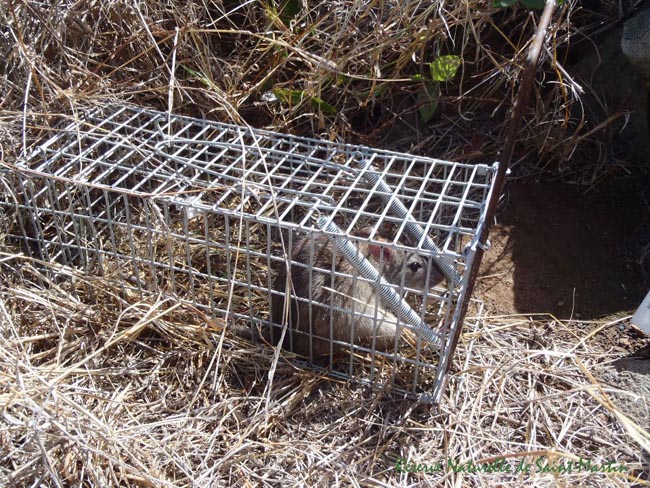211 rats and 79 mice were trapped during a capturing campaign lasting about 2 weeks on the islands of Tintamare, Pinel, Green Cay and Creole Rock. 200 traps were baited with harmless peanut butter and rolled oats, so as not to kill other species other than these rodents. This management campaign for small mammals took place from March 4th to 14th, 2013 and will be carried out again next year at the same time, just before egg-laying season. It was organized by the Reserve, along with the support of three researchers from the National Institute of Agronomy Research (INRA) and the National Museum of Natural History, as well as an intern in his 2nd year of Masters at the University of Antilles- Guyane. Introduced onto the islands, these rodents who just love birds’ and turtles’ eggs, pose a threat to the reproduction of the Brown Noddy and Tropicbirds and they also attack Gaiac trees by devouring its seeds. The objective of this campaign and conservation of these classified natural areas was to complete the inventory of the species present on the islands, initiated in 2010, and also to reduce pest populations. Further analysis will allow a better understanding of the two target species - genetic characteristics, reproductive cycles - and thus better identify their impact on the Reserve.
The Tintamare rat and the Pinel rat
As in La Fontaine’s fable, the difference between the Tintamare rat and the Pinel rat are their waistlines. Restaurants and visiting tourists ensure daily rations for the rodents on Pinel, while their brothers on Tintamare fight over a sliver of a sandwich. It is therefore paramount on each island to make sure that no food waste is left at the end of the day, and that everyone takes their garbage home. Any food supply is a godsend for these rodents, who tend to proliferate in the vicinity of the sites most frequented by the public and may represent a health risk - parasites and infectious diseases, and an environmental risk - attack on sensitive animal populations and plants. More than ever, enjoy the natural areas of the reserve, but be careful not to leave anything behind nor take anything (except your garbage!) from a protected area.

















